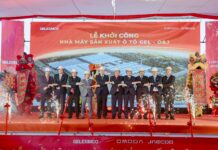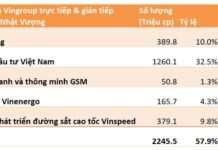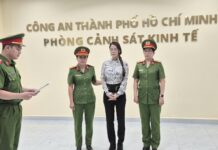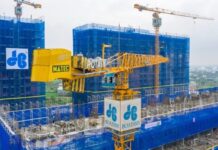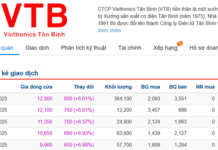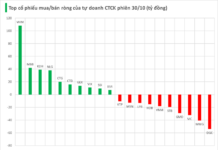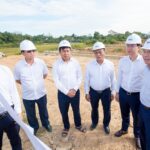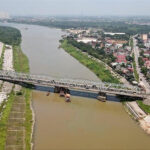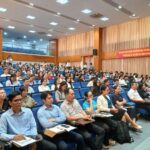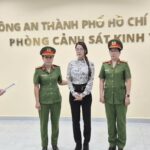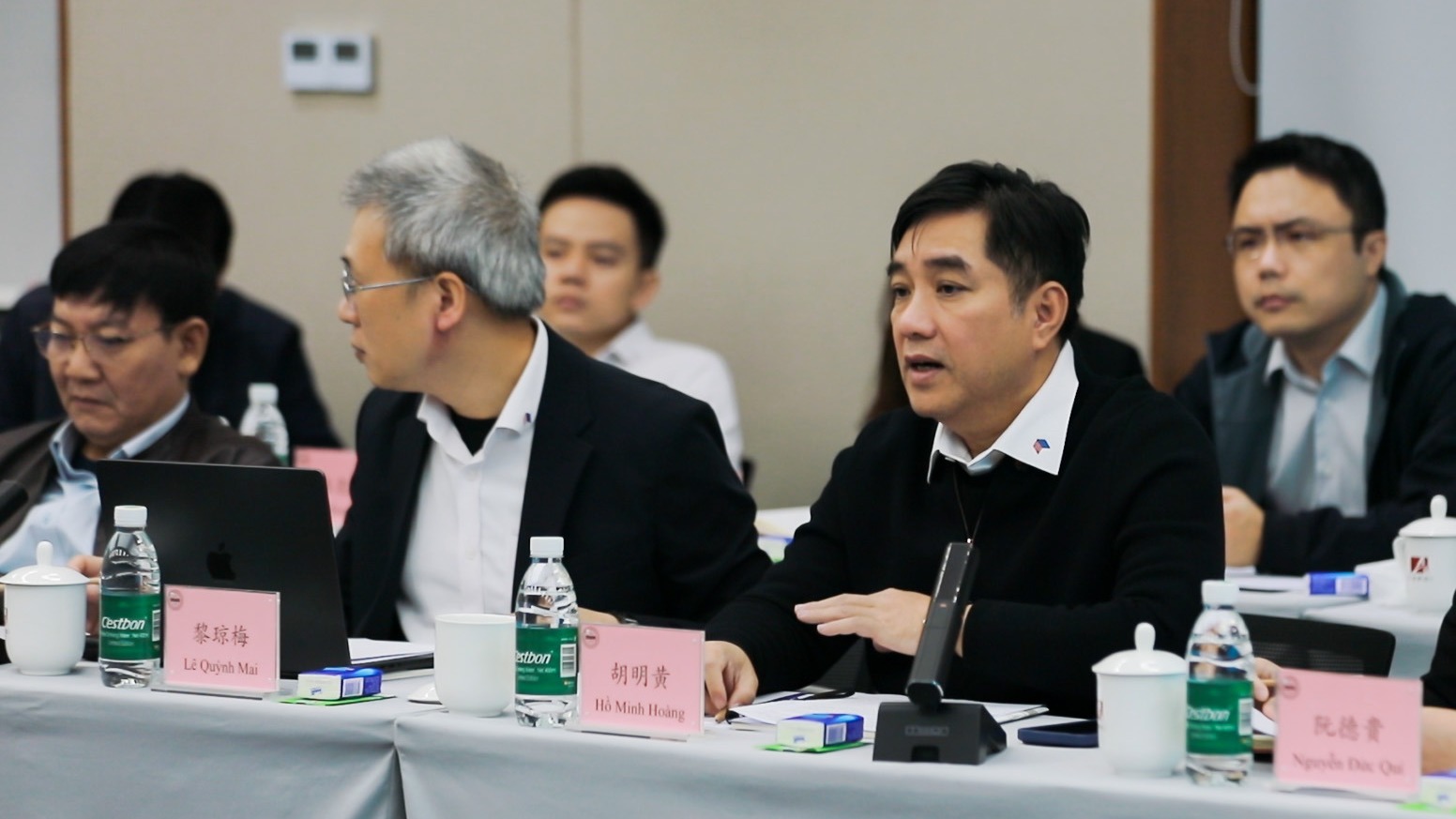
Mr. Ho Minh Hoang, Chairman of Deo Ca Group, during a business trip to China. Photo: Deo Ca.
Deo Ca Group announced that from October 24–28, a delegation led by Chairman Ho Minh Hoang visited China to host a seminar, share experiences, and conduct field surveys on urban infrastructure development combined with flood control. The trip aimed to research the Hong River Landscape Avenue Project, along with flood prevention and drainage solutions for Hanoi and other major cities.
During the meeting, Mr. Ho Minh Hoang mentioned that the Group has studied urban riverfront models, flood control methods, and successful water management solutions in countries like South Korea, Japan, and China.
Addressing urban flooding in Vietnam, particularly in Hanoi, the Chairman emphasized the urgent need to calculate and unify road elevations in planning designs.
He also urged partner units to base their studies on the latest hydrological, geological, and flood elevation data. Additionally, he requested A2Z Construction Consulting Company, the project’s overall consultant, and Hoa Thiet Design Group to update the most recent water level data and unusual events in the Hong River area during September and October.
Prof. Dr. Le Van Nghi, Director of the National Key Laboratory for River and Sea Dynamics, noted: “The Hong River system has unique hydrological features compared to other global river systems, including millennia-old dikes and a 500-year flood control cycle. When designing the project, alongside advanced global models, it’s crucial to consider current conditions for optimal adjustments.”
“Working with Deo Ca and partners, we’ve agreed on key quality criteria: limiting 500-year flood increases and minimizing riverbed siltation and surface changes. We’ve also conducted detailed mathematical simulations and physical models for specific Hanoi areas,” added Dr. Le Van Nghi.
Mr. Ho Minh Hoang believes that with proper implementation, Hanoi can overcome flooding caused by rising Hong River levels and heavy rainfall.
Applying TBM Tunneling, IoT, AI, and Big Data for Flood Control
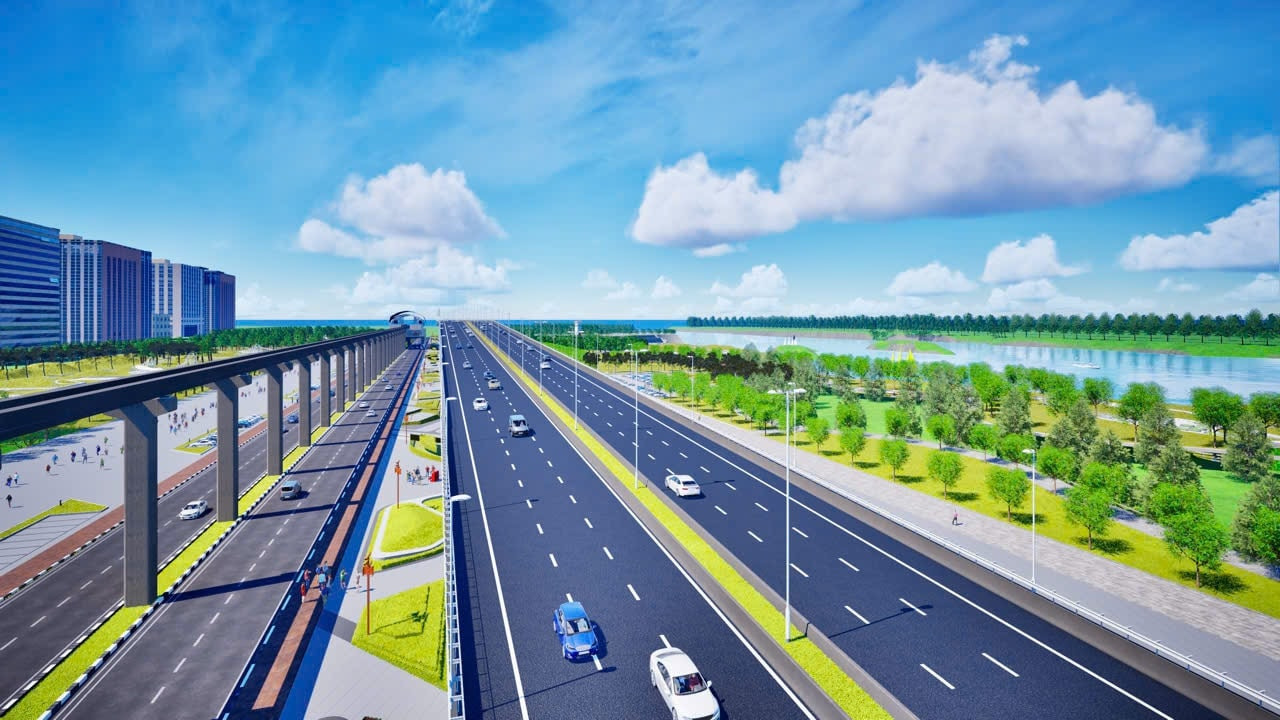
Rendering of the Hong River Landscape Avenue Project
Lu Zhi Yuan, Secretary of the Party Committee and Director of Chongqing Architecture Design Institute (China), stated that flood prevention and urban drainage are distinct systems. China’s experience highlights two main causes of urban flooding: extreme weather and inadequate infrastructure or inefficient drainage systems.
The Institute suggests installing pumping systems within dikes to drain flooded urban areas, designing parking lots with temporary water storage, and using weather-hydrological assessments for flood management (similar to Chongqing’s Yangtze River system). Exterior dike areas can include water-retaining structures and flood-resistant vegetation.
Mr. Ho Minh Hoang proposed short-term solutions (1-2 years): clearing all manholes and drains, dredging the To Lich and Ta Nhue rivers. Mid-term (2-5 years): building modern pumping stations at key flood-prone locations. Long-term (5-10 years): constructing 3-5 large retention basins near urban areas, combined with eco-urban development, and deploying multi-purpose TBM tunnels for major roads.
He also suggested smart technologies: early flood warning systems (IoT sensors), real-time flood maps (AI + Big Data), green roofs, permeable sidewalks (sponge city solutions), and separate rainwater drainage systems. This strategy balances feasibility, cost-effectiveness, and sustainability, drawing lessons from Tokyo, Seoul, Singapore, and Malaysia.
Malaysia’s SMART Tunnel in Kuala Lumpur, built with TBM technology, serves both transportation and flood control by incorporating a dual-level tunnel design.
The Hong River Landscape Avenue Project has an estimated investment of 300 trillion VND (excluding land clearance). It includes an 80km avenue along the riverbanks, from Hong Ha Bridge to Me So Bridge, featuring 67km of elevated roads and 10km of underpasses, with a 6-lane capacity. A parallel 84km monorail system (82km elevated, 2km underground) is also planned.
The Deo Ca – Van Phu consortium is tasked with researching and proposing this project. Construction is scheduled to begin in January 2026, with completion by 2030.
Hanoi Unveils $13 Billion Mega-Project: Red River Scenic Boulevard Enters Implementation Phase
The task force, led by Mr. Dương Đức Tuấn, Vice Chairman of the Hanoi People’s Committee, is responsible for overseeing the implementation of planning and architectural tasks, as well as conducting research to execute the investment project for the Hong River Scenic Boulevard.

